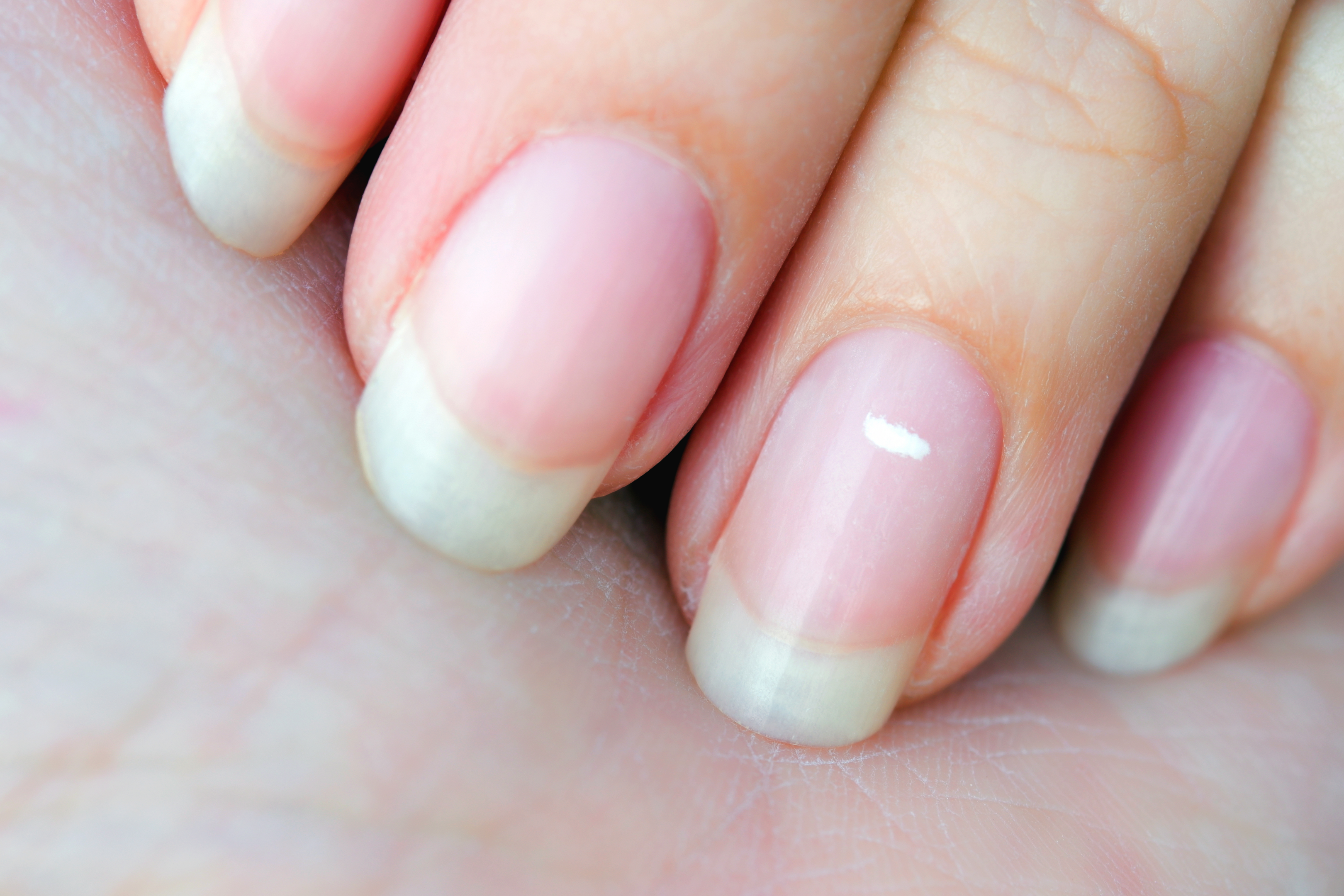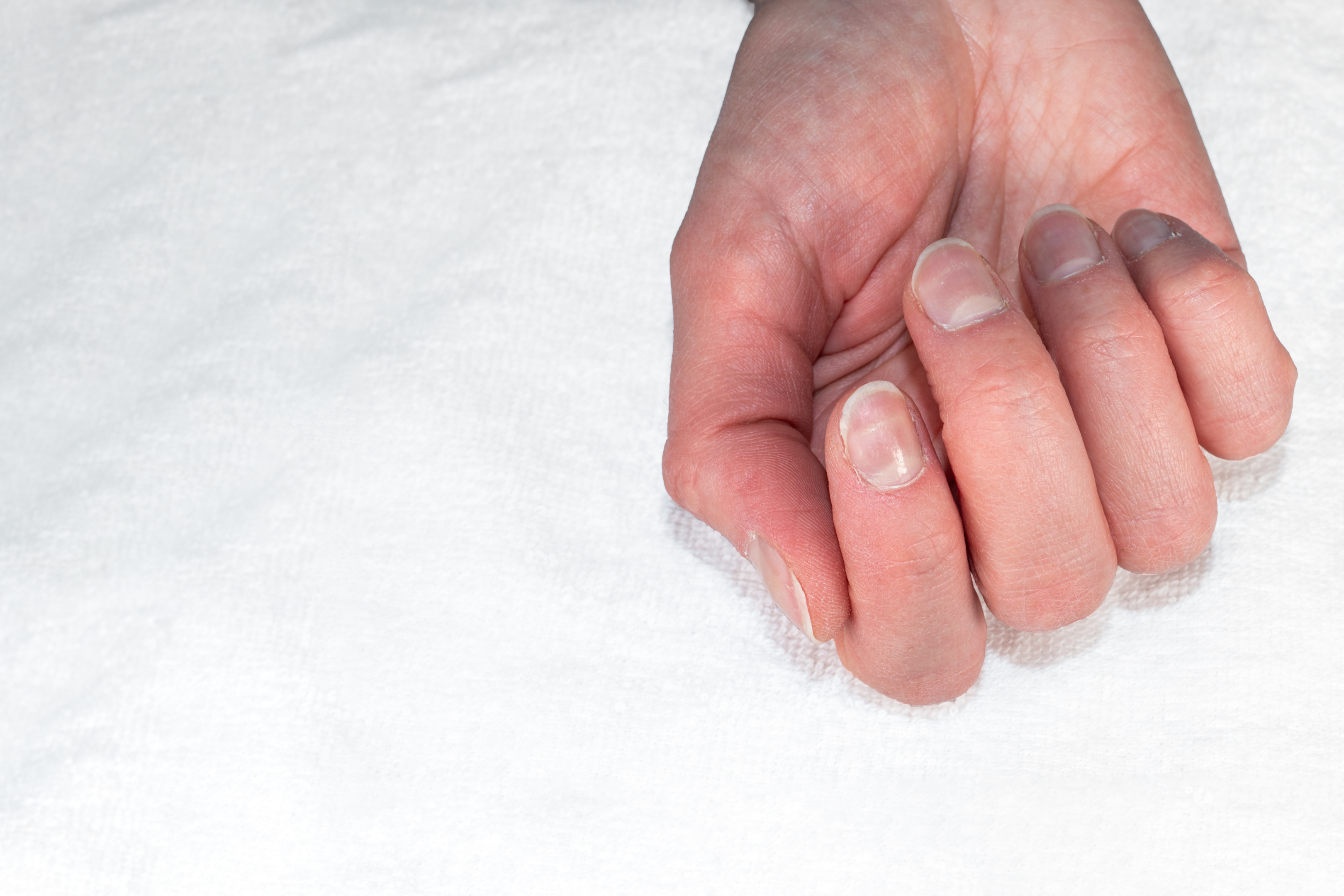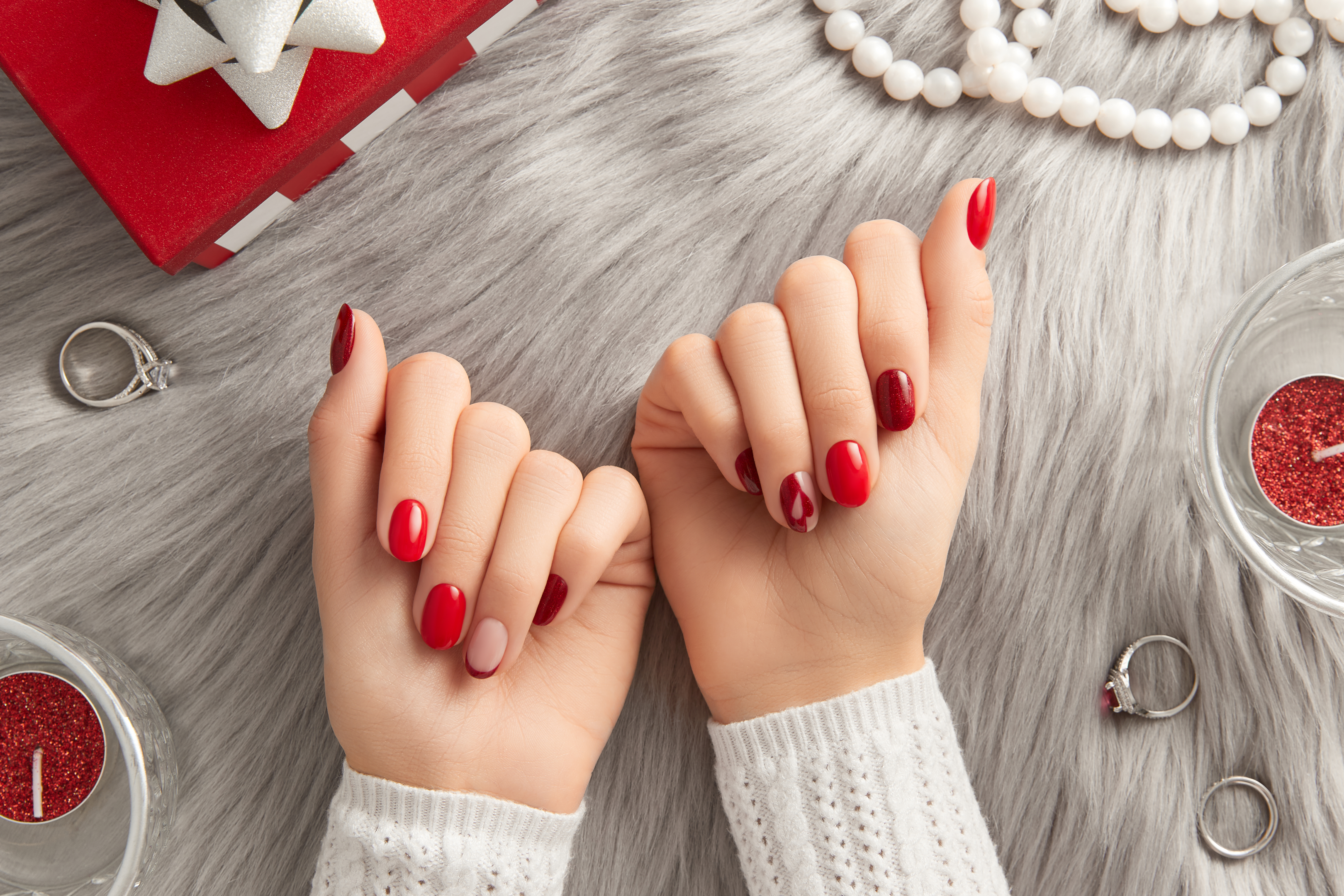Are white spots on nails a sign of vitamin deficiency?



Nails are formed on your finger and toe tips before birth and are normally light pink. The fingernails and toenails are made of skin cells that have undergone keratinisation, a process of converting living cells into the death, hard cells. The nail we see on our fingers are called the 'nail plates'. These plates rest on a sensitive area known as the 'nail bed'.
There is a crescent-shaped lighter area at the bottom called the lunula. Below this structure are the soft tissues which produce nails. Sometimes, the structure of nails can grow abnormal and white lines or spots on the nails are common among them. What are these spots? How are they formed, and what do they reflect about your health? And finally, are these spots linked with vitamin or mineral deficiency?
Let's go through these questions one by one.
The medical term for the white spots or lines in the fingernails is leukonychia. Leukonychia can be of various types based on the shape and nature of the spots. This leukonychia can either be complete or partial. In the case of total leukonychia, the whole of the nail turns white, while in the case of partial leukonychia, some parts of the nail are affected.
So, there are various other types of leukonychia;
One or many horizontal lines parallel to the lunula appear on nails. These lines are often referred to as the mees lines. These lines can be of variable length and width.
In this type, white bands are formed, which run down the nail. It is a relatively rare form of leukonychia.
This term means the formation of white spots on the nails. These spots can be of variable size and length and present on a few or all of the nails.

We can also categorise leukonychia into two types, true and apparent. In the true category, the issue is with the nails and the matrix tissues, which give rise to the nails. Putting pressure on the nails will not affect these areas; these areas also grow with the nail.
In the case of the apparent one, the nail is not affected; only the underneath skin is involved. Such white spots will fade away with pressure and will not grow with the nail. It is a condition in which white patches form on the inner skin and appear like partial leukonychia.
Regardless of the cause and type, anyone can develop it irrespective of ethnicity, age or gender.
So, now let's come back to the original question. What are the causes of leukonychia, and is vitamin deficiency among these causes?
The white lines or spots in the nail plate can be due to various causes, including infections, injuries, poisoning, etc. Here is a brief explanation of these causes;
Any injury that can damage the matrix or base of the fingernails (from which the nails arise) can result in white dots or spots in the nails. In most cases, the causative injury is often forgotten as the signs appear months after the injury (due to the slow growth of nails). The common injuries responsible are;
Hitting or striking the nails with a hammer or desk
Shutting the fingers in a window or door
The excessive pressure applied during the manicure can also result in this situation.
Depending upon the extent of the injury, the nails can be removed, or they can become reddish.
An allergic reaction to the chemicals used in nail polish, nail polish remover, gloss or other products can also result in white spots. Various chemicals can be responsible, including the tosylamide formaldehyde resin. It is added to these cosmetic products to improve the nail polish's shine, adhesive ability, application flow and rigidity.
Onychomycosis is a fungal infection of nails caused by a superficial white fungus. Small white spots on the nails are among the common symptoms. This fungal infection spreads to other areas of the nail, causing the flakiness, brittleness and thickness of the toenails.

This condition is fairly common in the UK and affects every 1 out of 4 people at some stage. The most susceptible people are older adults and those with weak immunity, diabetes or circulatory problems. Your fingernails develop fungal infections as they have the desired environment for fungal growth.
Some systemic diseases can also contribute, but these are less common causes. The common are;
Liver cirrhosis
Hyperthyroidism
Iron deficiency anaemia
Diabetes
Kidney failure
Heart failure
Pneumonia
If you have these conditions, consult the doctor for diagnosis and treatment.
The spots in fingernails could be due to the deficiency of some minerals. The common minerals related to it are calcium and zinc.
Read more: What are vitamins and minerals?
Several important diseases, e.g., hand eczema, nail psoriasis, and other inflammatory skin diseases, can also cause damage to the matrix of the nails, causing white spots. Leukoderma is another related condition which results in white spots on the underneath skin (apparent leukonychia).
Exposure to various chemicals is one of the causes.
Some drugs, e.g., anticancer chemotherapy drugs, antibiotics, e.g., sulphonamides etc., can also cause nail whitening. Heavy metal poisoning, e.g., lead poisoning and arsenic poisoning, can also cause white nails. Heavy metal poisoning can be very dangerous. Consult the doctor in case of any symptoms of metal poisoning through blood tests.
The condition is also rarely inherited. Some gene mutations can also be a cause and can be passed out to the other generation. Typically, total leukonychia appears in people born with this situation. Some other rare disorders responsible for white lines or spots on your nails are;
Darier disease
Bauer syndrome
Bart Pumphrey syndrome
Bushkill Gorlin syndrome
White spots and vitamin deficiency are often interlinked with each other. You might attribute it to vitamin deficiency if you frequently note white spots on the fingernails. It is one of the myths circulating in society related to leukonychia. How true is it? Let's find.
White spots in the fingernails are rarely a sign of vitamin deficiency and are mostly related to the conditions mentioned above. Although iron, calcium or zinc deficiency appears to have a role, these deficiencies are rare for people on a standard UK diet.

Our Supplements and Vitamins page has information and tests related to nutritional deficiencies. Click here to visit the page.
Various studies have found the levels of vitamins in the blood of people having white spots. Various types of nail abnormalities and their associated nutritional deficiencies are summarised below;
Longitudinal melanonychia (black nails): vitamin D or vitamin B12 deficiency
Transverse leukonychia: pellagra, hypocalcemia (calcium deficiency)
Hepalonychia (thin and soft nails): hypocalcemia, deficiency of vitamins A, D, B6, C
Koilonychia (soft and scooped out nails): iron deficiency anaemia, scurvy, pellagra, riboflavin deficiency
If you suspect your spots are due to vitamin or mineral deficiencies, speak to your doctor for a blood test to determine their levels. The test will help you know if you are deficient in vitamins and need supplements. However, the risk of deficiency leukonychia is very rare if you have a well-balanced diet.
Nails are an important part of your cosmetic beauty. The following tips can help you achieve your nails' optimum health.
If you are experiencing frequent white spots and suspect they are due to any injury, you may not need to visit the doctor. Be careful and take steps to reduce the risk of injuries.
Avoid nail-biting as it can result in weak and brittle nails.

However, if the spots are persistent and increasing rapidly, you should consult the doctor for diagnosis and treatment. Most of the causes of white spots are easily treatable if diagnosed earlier. A general physician will ask you to undergo the following tests;
Blood tests to detect heavy metal poisoning or any systemic disease
Nail biopsy in which a sample of nail and the surrounding skin are sent to the laboratory for testing.
Mycology in which the tissue scrapings or nail cuttings are studied under a microscope to find the causative fungus.
Treatment depends upon the cause of symptoms; the doctor will prescribe it after reviewing the test results and symptoms. The options at your disposal are;
Avoid harsh and allergic chemicals in cosmetic products.
Use anti-fungal drugs if the cause is a fungal infection. The fungal infections are very refractory to the treatment, and you may need to use antifungals for weeks to avoid a relapse.
Rest and wait. Once the cause is removed, allow the nail time to heal. The damaged part will move upward and will be shed completely.
Cosmetic applications can give you a temporary option to get rid of white spots if they are becoming too uncomfortable for you. Coloured nail polishes can be a good option to hide.
Some options can be helpful to avoid spots in future. These include;
Protect your nails from physical or chemical damage.
Rigorously note the symptoms of any change in colour and appearance of nails and seek medical attention in case of complications.
Eat a well-balanced and healthy diet containing all essential nutrients, vitamins, and minerals.
Keep in mind that the toenails and fingernails grow very slowly, and it may take up to 6 months or even more for white spots to disappear if the cause is removed.
White spots in fingernails are nothing to worry about for most people. They are rarely signs of serious disease and will likely disappear automatically without treatment. However, if you are very anxious and the signs of other problems are too apparent, you need to consult the doctor for treatment.
Some cosmetic products can provide a temporary option to hide them if you are too worried about your cosmetic beauty.

At Welzo.com, we have various products related to nail health. Click here to view and order these products. To view our other health products and services, visit the Welzo world.
Plus get the inside scoop on our latest content and updates in our monthly newsletter.